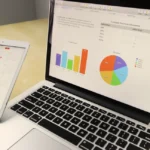
How to Invest in ETFs for Beginners
August 11, 2022When it comes to investing, there are many different options to choose from. One option that has gained popularity in recent years is ETFs, or exchange-traded funds. ETFs are a type of investment that can offer investors a way to diversify their portfolios and access different markets.
Contents
What is an ETF?
An exchange-traded fund (ETF) is a type of investment fund that trades on a stock exchange and holds a basket of assets, much like a mutual fund. ETFs allow investors to gain exposure to a wide variety of asset classes and investment strategies with the convenience of a single investment.
ETFs first came on the scene in the early 1990s, and they have become increasingly popular in recent years. Today, there are over 5,000 ETFs available globally, with assets totaling over $4 trillion.
So, what is an ETF? Let’s take a closer look.
An ETF is a type of investment fund that trades on a stock exchange. ETFs are similar to mutual funds in that they hold a basket of assets and allow investors to gain exposure to a wide variety of asset classes and investment strategies.
However, ETFs have a few key advantages over mutual funds. First, ETFs are more tax-efficient than mutual funds. Second, ETFs typically have lower fees than mutual funds, ETFs offer more flexibility in terms of trading and investment strategies.
So, if you’re looking for a convenient way to invest in a wide variety of assets, an ETF may be the right investment for you.
how ETFs differ from mutual funds
When it comes to investing in stocks, there are a lot of different options out there. One popular option is to invest in mutual funds. Another option is to invest in exchange-traded funds, or ETFs. Both of these options can be great choices for investors, but there are some key differences between them that you should be aware of.
For one, mutual funds are typically actively managed by a team of professionals. This means that there is someone making decisions about which stocks to buy and sell in the fund. ETFs, on the other hand, are typically passively managed. This means that they track an index, such as the S&P 500, and they don’t have a team of professionals making decisions about which stocks to buy and sell.
Another key difference is that mutual funds typically have higher fees than ETFs. This is because there is typically more active management involved with mutual funds. ETFs, on the other hand, have lower fees because they are passively managed.
If you want professional management and are willing to pay higher fees, then a mutual fund might be a good choice. If you want to save on fees and don’t mind not having professional management, then an ETF could be a better choice. Ultimately, it’s up to you to decide what’s best for your portfolio
Understanding ETF taxes
When it comes to investing in exchange-traded funds (ETFs), taxes are one of the most important considerations. ETFs are generally more tax-efficient than traditional mutual funds, but there are still some important tax implications to be aware of.
ETFs are taxed in a similar way to stocks. When you sell an ETF, you will owe capital gains taxes on any profits. The amount of tax you owe will depend on your tax bracket and how long you held the ETF.
If you hold an ETF for more than a year before selling, you will owe long-term capital gains taxes. These taxes are lower than short-term capital gains taxes, which apply if you hold an ETF for less than a year.
You will also owe taxes on any dividends you receive from an ETF. Dividends are taxed at your marginal tax rate, which is the rate you pay on your last dollar of income.
you should be aware of the tax implications of buying and selling ETFs in a taxable account. When you buy an ETF, you may owe taxes on any capital gains that the fund has realized. And when you sell an ETF, you will owe taxes on any capital gains that you have realized.
Taxes are a complex topic, and there is no one-size-fits-all answer when it comes to ETFs. Be sure to consult with a tax professional to understand the implications of investing in ETFs in your specific situation.
How much money do you need to be able to invest in ETFs?
When it comes to investing in ETFs, the amount of money you need to get started may surprise you. In fact, you can begin investing in many ETFs with as little as $100.
Of course, the amount of money you’ll want to invest in ETFs will depend on your overall financial goals and investing strategy. But if you’re simply looking to get started investing in ETFs, $100 is a great to start.
There are a number of reasons why you might want to invest in ETFs. For one, they offer a simple and cost-effective way to diversify your portfolio. ETFs also offer the potential for long-term growth, and they can be a good way to access certain markets or sectors that you might not otherwise be able to invest in.
So, how do you go about investing in ETFs? The first step is to find a broker that offers ETFs. Once you’ve found a broker, you’ll need to open an account and fund it with the amount of money you want to invest. Once your account is funded, you can then begin buying and selling ETFs.
If you’re not sure where to start, there are a number of resources available that can help you learn more about ETFs and how to invest in them. One resource is the website of the Canadian Securities Exchange, which offers a variety of educational resources on ETFs.
Another great resource is the ETF Database, which offers a detailed database of all ETFs available, as well as educational articles and tools.
So, if you’re looking to get started investing in ETFs, there’s no need to wait. With as little as $100, you can begin building a diversified portfolio of ETFs that has the potential to provide you with long-term growth.
What are the different types of ETFs?
There are many different types of ETFs available, and the type of ETF you choose will depend on your investment goals. Some of the most popular types of ETFs include: Stock ETFs: These ETFs track a particular stock market index, such as the S&P 500 or the Dow Jones Industrial Average. These ETFs track a particular stock market index, such as the S&P 500 or the Dow Jones Industrial Average. Bond ETFs: Bond ETFs track a variety of different bond markets, including government bonds, corporate bonds, and high-yield bonds. Bond ETFs track a variety of different bond markets, including government bonds, corporate bonds, and high-yield bonds. Commodity ETFs: Commodity ETFs track commodities, such as gold, silver, oil, and natural gas. Commodity ETFs track commodities, such as gold, silver, oil, and natural gas. Real estate ETFs: Real estate ETFs track a variety of different real estate markets, including residential and commercial property.
15 of the Best ETFs for Beginners
If you’re just starting to invest in ETFs, you might be wondering which ones are the best for beginners. Here are 15 of the best ETFs for beginners, based on factors like asset type, expense ratio, and liquidity.
- Vanguard S&P 500 ETF (VOO)
Vanguard S&P 500 ETF is one of the best ETFs for beginners because it offers exposure to large-cap stocks in the U.S. stock market. The expense ratio is just 0.03%, and the average daily trading volume is over $2 billion.
- SPDR S&P 500 ETF (SPY)
SPDR S&P 500 ETF is another great option for beginners. It also offers exposure to large-cap stocks in the U.S. stock market. The expense ratio is just 0.09%, and the average daily trading volume is over $14 billion.
- Vanguard Total Stock Market ETF (VTI)
Vanguard Total Stock Market ETF is a good choice for beginners who want broad exposure to the U.S. stock market. It includes small-, mid-, and large-cap stocks. The expense ratio is just 0.04%, and the average daily trading volume is over $1 billion.
- iShares Core S&P 500 ETF (IVV)
iShares Core S&P 500 ETF is another good choice for beginners who want exposure to large-cap stocks in the U.S. stock market. The expense ratio is just 0.07%, and the average daily trading volume is over $5 billion.
- Vanguard FTSE Developed Markets ETF (VEA)
Vanguard FTSE Developed Markets ETF offers exposure to large- and mid-cap stocks in developed markets outside the U.S. The expense ratio is just 0.07%, and the average daily trading volume is over $2 billion.
- iShares MSCI EAFE ETF (EFA)
iShares MSCI EAFE ETF is another good choice for investors who want exposure to developed markets outside the U.S. The expense ratio is just 0.32%, and the average daily trading volume is over $4 billion.
- Vanguard Emerging Markets ETF (VWO)
Vanguard Emerging Markets ETF offers exposure to stocks in emerging markets. The expense ratio is just 0.14%, and the average daily trading volume is over $3 billion.
- iShares Core MSCI Emerging Markets ETF (IEMG)
iShares Core MSCI Emerging Markets ETF is another great choice for investors who want exposure to emerging markets. The expense ratio is just 0.14%, and the average daily trading volume is over $5 billion.
- SPDR Gold Shares (GLD)
SPDR Gold Shares offer exposure to gold, which can be a good diversifier for a portfolio. The expense ratio is 0.40%, and the average daily trading volume is over $4 billion.
- iShares Silver Trust (SLV)
iShares Silver Trust is another good choice for investors who want exposure to precious metals. The expense ratio is just 0.50%, and the average daily trading volume is over $1 billion.
- Vanguard REIT ETF (VNQ)
Vanguard REIT ETF offers exposure to the real estate market. The expense ratio is just 0.12%, and the average daily trading volume is over $2 billion.
- iShares US Real Estate ETF (IYR)
iShares US Real Estate ETF is another good choice for investors who want exposure to the real estate market. The expense ratio is just 0.43%, and the average daily trading volume is over $1 billion.
- Vanguard Utilities ETF (VPU)
Vanguard Utilities ETF offers exposure to the utilities sector. The expense ratio is just 0.14%, and the average daily trading volume is over $500 million.
- iShares US Consumer Services ETF (IYC)
iShares US Consumer Services ETF offers exposure to the consumer services sector. The expense ratio is just 0.48%, and the average daily trading volume is over $700 million.
- SPDR S&P 500 Buyback ETF (SPYB)
SPDR S&P 500 Buyback ETF offers exposure to stocks that are repurchasing their own shares. The expense ratio is just 0.35%, and the average daily trading volume is over $100 million.
If you’re a beginner investor looking to get started with ETFs, there are a few things you should keep in mind. First, make sure you understand what ETFs are and how they work. Second, do your research and compare different ETFs to find the one that best suits your investment goals. And finally, don’t forget to pay attention to fees, as they can eat into your investment returns. With a little bit of planning and due diligence, investing in ETFs can be a great way to grow your portfolio.









